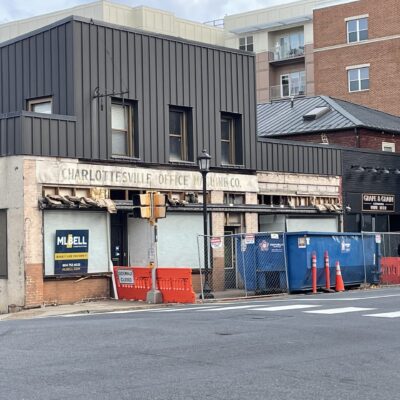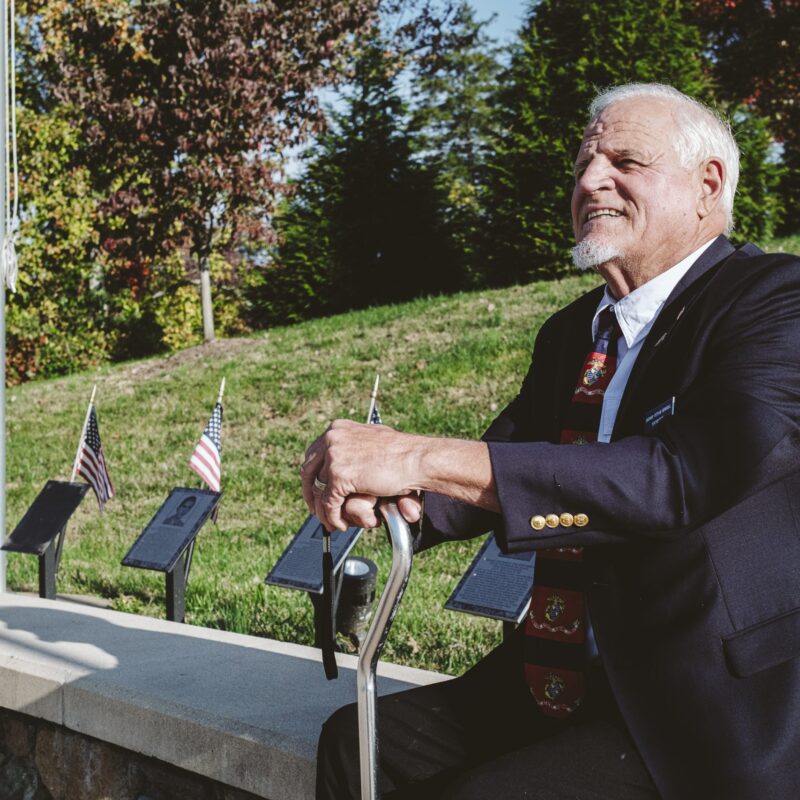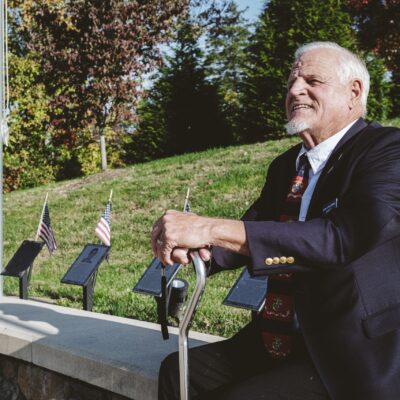| More feature articles:
Function is the new form Rock this town Fresh air Home style |
Maurice Cox, former Charlottesville city councilor and mayor, has temporarily left his position as a UVA architecture professor in favor of a two-year stint as director of design for the National Endowment of the Arts. Part of his time with the NEA will be spent helping mayors of other cities solve design problems.
Cox is a champion of democracy in design—the belief in allowing not only people with a financial stake in a project to have a voice in its final form, but also people from across the community, who will have to live around a project for years to come. “Everyone ultimately has a right, and I believe actually a birth right, to live in an environment that is of high quality, and our elected and appointed leaders are entrusted with protecting and preserving and enhancing that quality of life,” says Cox.
 Maurice Cox |
 On the Downtown Mall: “I think it’s arguably one of the most democratic spaces in Charlottesville, in part because it allows for people to mingle, allows people of all economic levels, all social levels to intermingle in a space. Our Downtown Mall is a classic example of a space that became more democratic over its evolution in the past 30 years.” |
That there are public rights that trump individual interests is about the most traditional of American ideals, but the notion that those rights include access to high design, and even more importantly, a say in that design, is a fairly modern viewpoint. Here’s some more of what Cox had to say about the subject and some of Charlottesville’s most recognizable urban designs.
 On 10th and Page: “It took a corner that was truly troubled, and through sensitive infill of affordable housing types, PHA was able to create an anchor that is appropriate to the scale of that neighborhood and also helps to increase the range of housing options.” |
C-VILLE: Is a private developer obligated to consider the public’s interest?
Maurice Cox: I think that the public good trumps the private interests. Obviously, developers play an important part in revitalization of a community, because they bring significant investment and they take considerable risks. But we inherit whatever it is that they produce.
Charlottesville has said we don’t want to be a city of strip commercial streets. We want mixed use, we want retail on the streets and people living above. That’s a statement of value. Very often, the developers—if a community can be that clear about what they want—know how to deliver that product. The challenge is when a community hasn’t articulated clearly what it wants to be. And that’s when you get all of the public fights.
 On Belmont Lofts: “That was the Belmont neighborhood that decided that, instead of single-family detached houses, it was more appropriate to build something with an industrial railroad scale and character.” |
A more beautiful built-environment also tends to draw a wealthier population that can gentrify a community and push out long-term residents. How does a city mitigate that?
It’s an interesting challenge. Certainly the option is not to be less attractive and therefore no one comes. What’s more important is to put in place the mechanisms that protect all segments of your community, such as Fifeville being promoted as a possible historic district, which gives the city the ability to preserve the existing housing stock. But the regeneration of neighborhoods is a process that should never be stopped.
How does Charlottesville compare to other cities you’ve observed in terms of public interest in design issues?
I think we have a tradition of people feeling empowered to speak publicly about their community. We have all kinds and all scales of meetings where people gather to talk about the quality of this or the quality of that. I know that it’s considered cumbersome, you know, “All right, let’s get on with it and do something.” But inevitably what it’s done for Charlottesville is increased people’s capacity and readiness for change. And that’s really why you engage the public in a discussion of design at all, or for any public dialogue. It’s about increasing the ability for a community to feel ready to accept change.
I’m always thankful that Charlottesville is an engaged enough community that they will take the time to deliberate often on very challenging issues. The important part of that, however, is to make a decision at the end, which is always the hard part.
So often, the people who speak at public meetings are adjoining property owners, perhaps, or business owners. How do you include those who rarely show up?
This is one of the challenges, because different parts of the community have a different level of comfort with what is, in essence, learning in public. Most of it has to do with meeting them where they are, whether it’s engaging them in the history of their neighborhood, whether it’s calling a workshop by another name—it’s a picnic, it’s a community gathering. It’s basically giving people a level of comfort with the process of learning in public.
 On Westhaven: “It’s a long process, it can be a very contentious process, and we don’t have as much experience in speaking to residents who don’t feel naturally empowered to make these decisions. So we’re going to have to build our own capacity as a community to hold steady and create an environment where people feel it’s safe, safe to ask an awkward question, safe to ask for more information.” |
You spent several years in Italy. How does the process compare there?
What’s impressive about the area [Northern Italy] is that it’s one of the most highly regulated environments you can imagine. You can’t change one thing about it without going through an extensive public process. Architecture is talked about in the newspaper constantly, on the streets constantly. It’s taught in the schools. There’s a culture of public dialogue, and as a result of it, everyone understands the power of architecture, and they’re among the most beautiful and desirable places to live in the world. That’s what we’re trying to create here.





